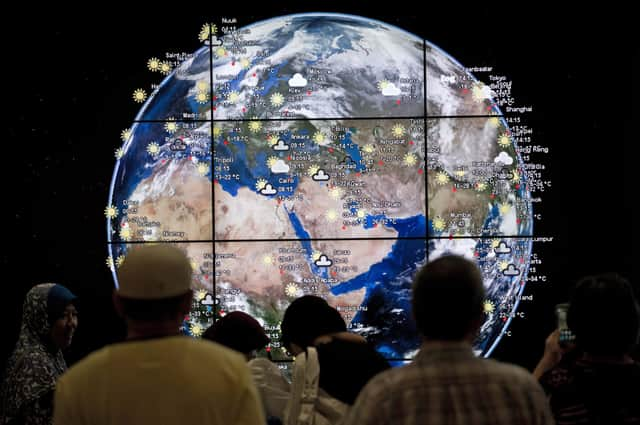Digital Earth: Revolution in data means creation of entire replica planet in cyberspace is possible – Marian Scott


This digital transformation is affecting us all sometimes visibly, sometimes invisibly. In the environmental sciences, increasing use of digital technology is also transforming what we understand of our world, the plants and animals that share the planet with us. Data are a key part of our toolkit in tackling climate change and biodiversity loss, which are global challenges but which also affect us individually.
So what has changed and why should we be optimistic? We have moved from slow and infrequent data collection, which was very labour intensive, to the internet of things, new smart, autonomous sensors, citizen science, and importantly, new satellite missions carrying new sensors, with data arriving at unprecedented rates.
Advertisement
Hide AdAdvertisement
Hide AdWe have opportunities to observe, measure and monitor in locations we could not reach – some of them inhospitable and extreme, like an erupting volcano. There are also chances to create ‘digital twins’ of earth systems or, ultimately, a digital Earth.
Digital Earth has been described by the European Union as “an interactive digital replica of the entire planet that can facilitate a shared understanding of the multiple relationships between the physical and natural environments and society”. This means we are thinking about complex and interconnected systems.
A conceptual example would be the linkage of the atmospheric, oceanic, freshwater and terrestrial systems. Now add to this living organisms – specifically people and our urban systems – and this rapidly becomes very complex.
To build a digital Earth, we need models, and we need more and more data. There has always been a phrase that describes the scepticism we need to keep in mind: “All models are wrong, but some are useful.”
Globally and nationally, we are, as a society and an individual, tasked to reduce our carbon emissions. We also have ambitions to not only halt the loss of biodiversity, but to reverse those losses.
These are grand challenges where a digital Earth will be an important tool and where these new rich data streams will help inform the effects of our interventions and the trajectories which are moving along.
National data inform us of carbon emissions at very spatially aggregated scales; smart meters in our homes provide detailed data at an individual level (which needs to be protected to maintain our privacy); satellite missions can map different gas sources such as methane; volunteer and citizen science campaigns observe and record the presence or absence of different species, but can be biased sometimes by the non-systematic recording (for example, only in good weather), while in other settings, airborne surveys allow us to follow migrating herds of animals over large distances to map their range.
Authors in many disciplines write about the data deluge; we hear about data lakes, and organisations sometimes describe themselves as being “data rich”, but “information poor”. All reflect the growing data and digital ecosystem. As a society, we can’t afford to ignore this new digital landscape. We should relish the opportunities it unlocks and focus on the use of data for individual and societal good – and to help to save our planet.
Marian Scott is professor of environmental statistics at the University of Glasgow
Comments
Want to join the conversation? Please or to comment on this article.